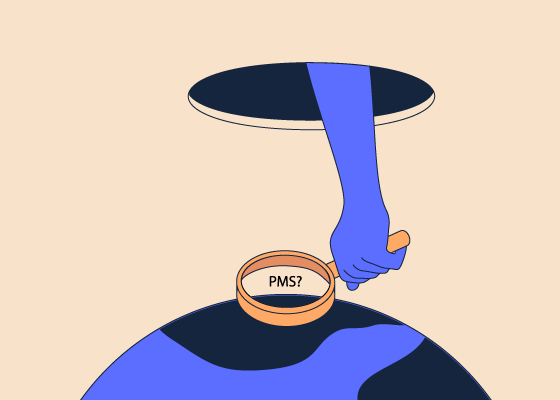The role of progesterone in all stages of pregnancy
Progesterone is a hormone secreted from the corpus luteum, a structure of cells formed within the ovaries, and plays an essential role in all stages of pregnancy: from regulating ovulation; thickening the endometrium (lining of the womb); supporting implantation of the egg; through to maintaining a healthy pregnancy to full term (1,2).
If you're planning a pregnancy, testing your progesterone levels can allow you to gain greater knowledge of your fertility and understand if and when you are ovulating (3).
Home-testing for ovulation via hormone tracking
To track your own progesterone levels, the inne minilab is a simple device that takes a daily hormone reading from your saliva, in order to familiarise yourself with your own ovulation status.
Using the inne app, you can build your own progesterone trend curves based on your daily measurements, and track and better understand your ovulation.
Understanding ‘normal’ low progesterone levels within your cycle
When seeking to learn about your fertility with the inne minilab, it’s important to understand that lower levels of progesterone are normal, as part of your natural relative hormonal fluctuations throughout your monthly cycle (4).
As a matter of fact, progesterone levels are usually low during the first stage of your monthly cycle until ovulation. After ovulation occurs, your progesterone levels increase through to the mid-luteal phase. Following this peak, the progesterone concentration begins to decrease back to its baseline level, during the follicular phase (5).
If the released egg is fertilised, progesterone levels will continue to rise as your body prepares to support a developing baby: triggering the endometrium to thicken in order to accept the fertilised egg and prohibiting muscle contractions in the uterus that would cause the body to reject the egg.
In this case, progesterone continues to stimulate blood vessels in the endometrium that will feed the growing fetus (6). However, if the egg is not fertilised, the corpus luteum breaks down, lowering the progesterone levels in your body and your period will begin (4,7).
When progesterone is deficient
Low progesterone can sometimes be a medical condition, called ‘progesterone deficiency’. Women who experience progesterone deficiency may struggle to get pregnant or face an increased risk of miscarriage or pre-term delivery. Their body is therefore unable to prepare or maintain the right environment for the egg and developing baby (1,6).
Symptoms and causes and of progesterone deficiency
Symptoms of progesterone deficiency can include: abnormal bleeding, irregular or missed periods, spotting and abdominal pain during pregnancy, recurrent pregnancy loss (1).
As progesterone is produced by the body during ovulation, an obvious cause of low progesterone as a deficiency can be failure to ovulate, or other issues with the reproductive organs. With lack of ovulation, the most common causes can include: polycystic ovary syndrome, thyroid dysfunction, chronic stress, low body weight (below 12% body fat), obesity. Low progesterone in women can also be a consequence of inflammation, auto-immune disorders, inadequate nutrition, and certain cancers (8).
As with any medical issues, if you have any concerns about your levels of progesterone, you are advised to talk to your doctor. They will provide advice on identifying and resolving the cause, and/or whether treatments for progesterone deficiency, might help.
References
1. Jessica Caporuscio, Low progesterone: Symptoms, causes, and treatments, Medical News Today, article consulted on Nov. 6th 2020. Available from: https://bit.ly/38ArbMR
2. Sitruk-Ware R. Non-clinical studies of progesterone. Climacteric. Aug. 2018, 21(4), pages 315-320.
3. Barbieri RL. The endocrinology of the menstrual cycle. Methods Mol Biol. 2014;1154. Pages 145-69.
4. University of Rochester Medical Center, Progesterone, article consulted on Nov. 6th 2020. Available from: https://bit.ly/35rK1Uj
5. Chou CH, Chen MJ. The Effect of Steroid Hormones on Ovarian Follicle Development. Vitam Horm. 2018;107. Pages 155-175.
6. The Hormone Health Network, Endocrine Society, Progesterone and Progestins. Oct. 2019. Article consulted on Nov. 6th 2020. Available from: https://bit.ly/32BJ2PC
7. MedlinePlus, National Library of Medicine, Progesterone Test, article consulted on Nov. 6th 2020. Available from:https://bit.ly/36zYqNs
8. BodyLogicMD, Understanding Progesterone Deficiency Symptoms and Their Possible Causes, May 19th 2019. Article consulted on Nov. 6th 2020. Available from: https://bit.ly/2IqizxM




